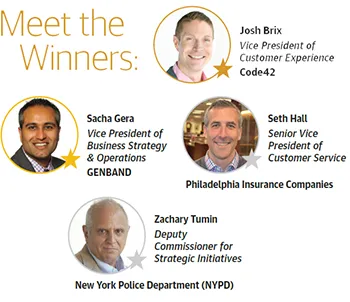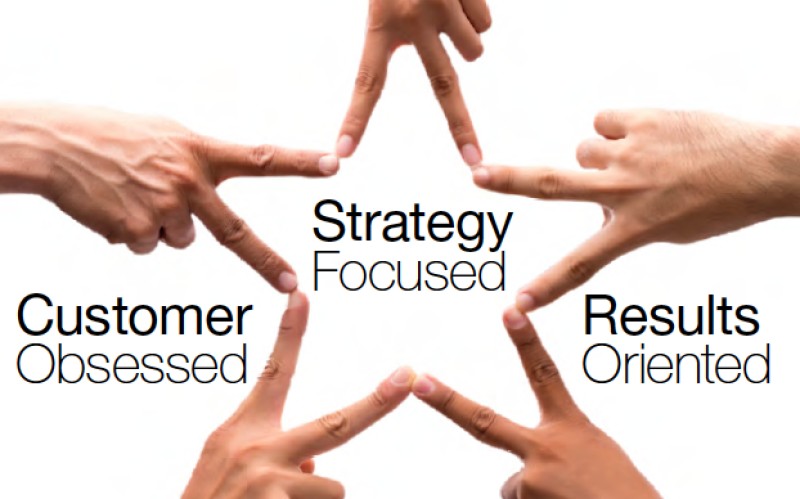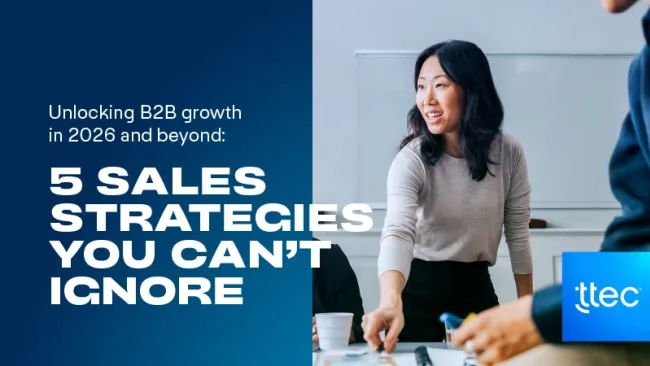The winners of the 2015 Gartner & 1to1 Media Customer Experience Excellence Awards demonstrate dedication and commitment to the customer. They have a vision. They establish goals and objectives. And, they ensure those goals meet customer expectations. With the big picture in place, they dive into the everyday reality of their business to create processes, assemble cross-departmental teams, and implement technologies to make them agile enough to respond intuitively to customers’ needs. They work hard to create the right kind of engagement in the right channel at the right moments in their journeys.
We recently sat down with a few of this year’s winners to gain some of the hidden insights and benefits they uncovered as they created their successful customer experience programs.
Customer Strategist: When embarking on your customer programs, what were some areas of unexpected opportunity?
Zachary Tumin, NYPD: Our greatest and most satisfying surprise was the readiness of commanders when given social media platforms to use them to advantage. It was truly a pent-up demand. That willingness made all the difference. We did not poll beforehand; do user-acceptance testing; none of that.
We identified five commanders we thought might be receptive, opened their accounts, trained them, set guardrails, and watched them soar. That created new appetite among those waiting for their chance, and for us, the opportunity to bring more commanders onto the platforms faster than we had anticipated. That, in turn, accelerated innovation.
For example, we developed “dispatch accounts,” which are centrally stocked Twitter feeds that all commanders can retweet from. This is especially helpful for efforts to locate missing persons, for example, when we want as many eyeballs searching locally as we can get. As a result, we were quickly able to document instances where long-sought individuals were located and reconnected with their families.

Seth Hall, Philadelphia Insurance Companies: When we first started our program, we felt strongly that we wanted to create a process that was meaningful to our customers. We felt strongly that if we were going to ask them to fill out a survey, then we better have a process in place to get back to them, swiftly. We had anticipated that we’d also be able to accumulate the feedback and trend it so that we could then make strategic decisions regarding the prioritization of key initiatives.
That worked well, but we severely underestimated the impact we would have on our customers by just responding to the survey. Customers were consistently telling us that they were impressed and very pleased that we were simply getting back to them. They were less concerned about the actual content of the problem (although that was certainly relevant), and more impressed and taken aback by the fact that we not only listened, but we also very quickly contacted them to recognize their survey. This had, and continues to have, a positive impact on our entire service delivery.
Sacha Gera, GENBAND: Our focus for the past 18 months was on reengineering the customer support experience, and we’ve been very successful. Now that we’ve established a framework for quality improvement, we’re working to expand this vision into what we call “early life,” which for us is the time period running from before [a project goes] live all the way through the first 60 days of an implementation.
Our goal is to take this effective methodology and apply it to other areas of the business including R&D, the supply chain, professional services, and new product introduction in order to have a true cross-functional vision and have our customers rate the entire early life experience “excellent,” as they do our customer service.
Josh Brix, Code42: There are a couple of themes that emerged. One, our incredibly strong customer satisfaction and NPS numbers became a competitive differentiator for us—these numbers speak louder than words. And, we’ve been able to identify our biggest advocates and provide them with the opportunity to share their Code42 stories.
From a product development perspective, our customer experience program has provided areas of focus within our product. We heavily rely on customer feedback when building our product capabilities and roadmaps.
Overall, as a business we’ve learned from our customers what’s working and where we have room for improvement. We’ve shored up communication gaps in terms of product direction and capabilities using our customer-first approach.
CS: How has your customer program’s success permeated other areas of your business? Were there internal departments or areas that weren’t initially considered customer-focused that benefited from a deeper customer focus?
Seth Hall: We have had other departments within our organization catch the “VOC” buzz. It’s not that they weren’t customer-focused before, but I am not sure they realized just how impactful this data could be—if harnessed and utilized effectively. At this point, every department within our organization that touches a customer is utilizing our VOC program in some fashion. All departments have great support from top to bottom and are using the data in a very meaningful and consistent manner.
Zachary Tumin: From the very start our program demonstrated the new resolve of the NYPD Commissioner to “open” up the department. We tweeted live from NYPD’s weekly Compstat meeting, for example—long-closed to any but NYPD executives. Our program demonstrated further the Commissioner’s resolve to re-empower local commanders. Where before the NYPD had two centrally run social media accounts, giving social media accounts to 100 local commanders re-acquainted them with discretion and decision-making, matching other initiatives the department was taking to strengthen local-level commands. And it shifted the strategic focus from “talk at you” megaphone accounts with no real listening, to 100+ acconts with listening and engagement. Among departments who benefited most, was perhaps, the NYPD Chief of Detectives. They quickly took advantage of the social media accounts to share the search for suspects and to commend officers and citizens alike.
Josh Brix: Our Quality Assurance (QA) and Engineering efforts became more focused on the customer. Engineering, QA, and the Customer Experience teams all attend daily stand-ups about critical customer issues—everyone has a vested interest in making sure our customers are successful, and we’re focused on creative ways to help customers through challenges.
CS: How have you countered those resistant to customer change—those who say that what they do isn’t customer-facing, or customer centricity doesn’t matter to them?
Zachary Tumin: We have let the facts speak for themselves. We have so many opportunities and commands eager for this that the tide has turned and the outliers are exactly that—outliers. We have plenty of good work to do with those who are eager and we are patient with those who might be resistant.
Sacha Gera: We have a shared vision across the company and every win helps swing more non-believers over time. It’s a top-down approach with frequent communications, which helps people understand that everything they do ultimately helps the customer. Something like an infrastructure change that helps us manage data better ultimately leads to a better customer interaction—it’s important to connect the dots and help people see that all of these seemingly unrelated changes have an impact and that their work matters.
Winning the Gold in the ‘Transformational Customer Experience’ category in the 2015 Gartner & 1to1 Media Customer Experience Awards has been an added boost—the external recognition is both a great point of pride and a tremendous motivator.
Josh Brix: Code42’s culture rallies around two mantras: 1) “Customer first”; and 2) “Get it done. Do it right.”
Our customers are at the heart of what we do—they drive our culture and our mission. All departments—no matter the level of customer interaction—are taught to put the customer first. And our Customer Experience team leads this charge. In traditional organizations, QA and Documentation have very little direct contact with customers. We’ve found that aligning those teams with our Customer Champion support team provides a direct line to critical customer feedback and insights.
CS: What would you say to people who say that customer initiatives aren’t important because they don’t always show financial ROI?
Josh Brix: Your customers are your biggest sales force. Keep them happy and they become an extension of you—validating your story in the marketplace. High satisfaction rates are tied to high retention and renewal rates—both keys to a SaaS-based business. In fact, there’s a direct correlation to customer retention rates and overall financial success.
Seth Hall: There are many longitudinal studies that draw correlations between customer experiences leaders/laggards and their respective stock price. What it clearly shows is that those who have high customer experience scores will disproportionally outpace those (relative to stock price) who are considered customer service laggards. That is quantifiable and tough to disprove. What that does is prove that those investments in enhancing our customer experience will pay dividends—in either stock price, retention, new sales, etc.—all of which are metrics that move that ROI meter.
Sacha Gera: I think everyone agrees that providing your customer with a top-of-the-line experience is an imperative no matter what business you’re in. There are a lot of intangibles you can’t measure, but ultimately you want to get rid of any inhibitors to your customers doing business with you, so you are dealing with the bottom line.
For example, being able to say that 80 percent of our customers think we offer better customer support than the competition is a key differentiator that also helps put prospects at ease.
We see companies of every size and across every industry making a concerted effort to rework their customer experience because they understand that it has a measurable impact on the health of their business.
CS: How will you take the next step to incorporate even more customer centricity into your organization?
Sacha Gera: We really focus on leading by example here, and one differentiator is that we have a very customer-focused leadership team that maintains and nurtures these relationships day in and day out. This really helps to drive the entire organization forward toward the same goal, which is to be out in front of customers and ensure that they have the best experience possible.
Josh Brix: While many companies devote significant time and energy to listening to the “voice of the customer,” few of them are very happy with the outcome. To ensure customer feedback is heard and acted upon, we’ve developed a formal “Close the Loop” process facilitated by the Customer Experience team that provides relevant departments with specific customer insights to help chart paths for improvement.
Seth Hall: Easy….we are going to keep doing what we do. However, we’ll look for how we can do it better, faster, and even more effectively!















